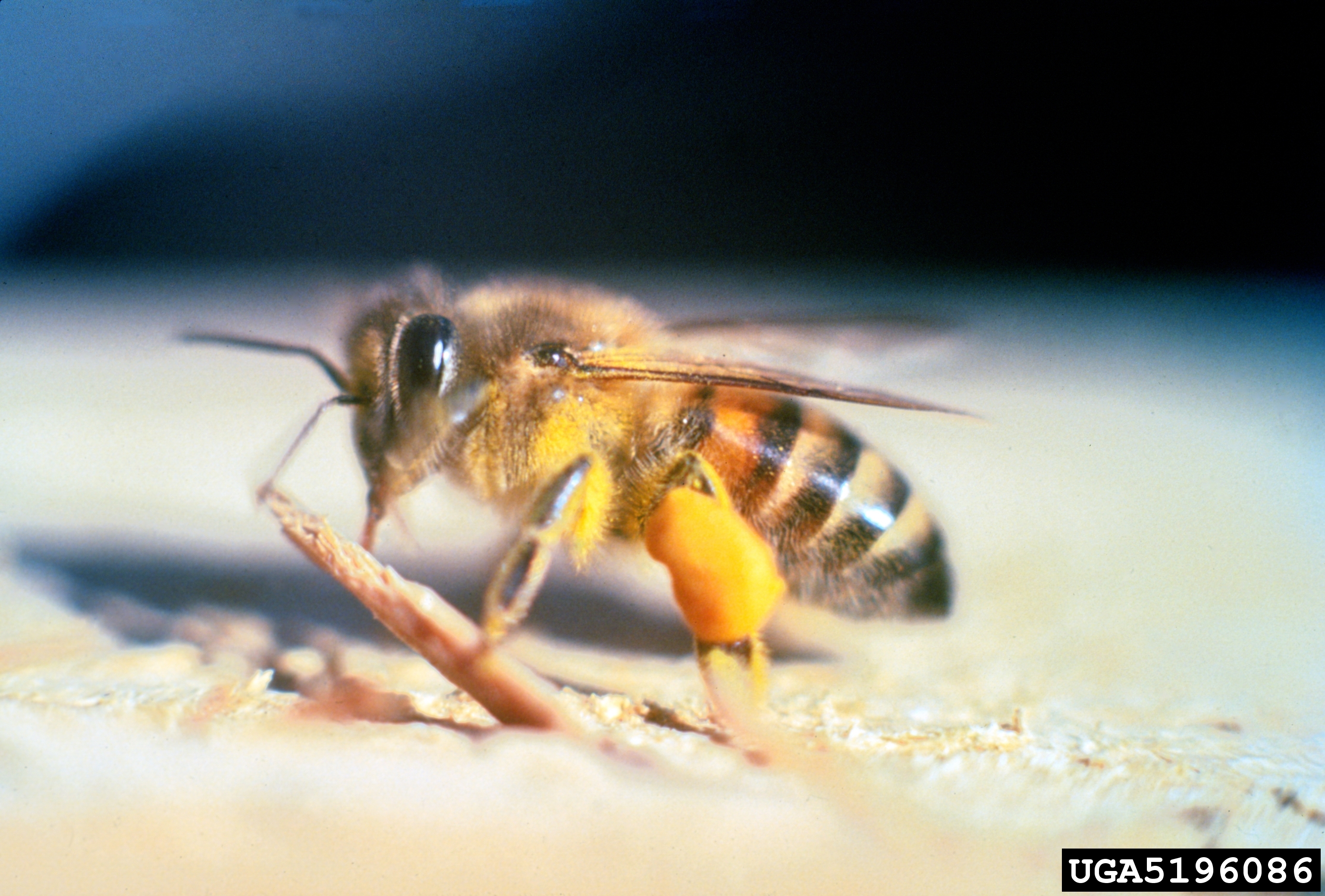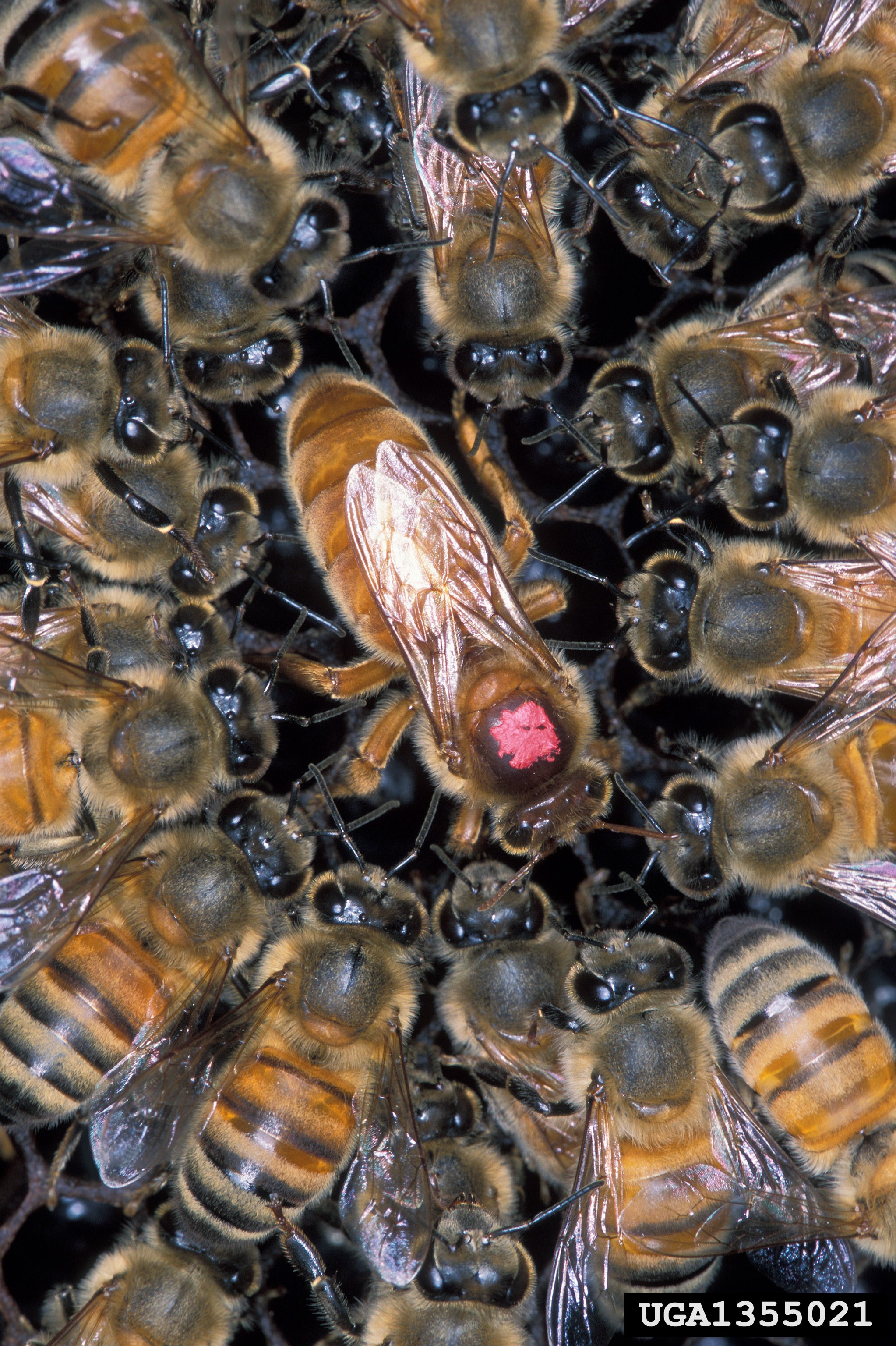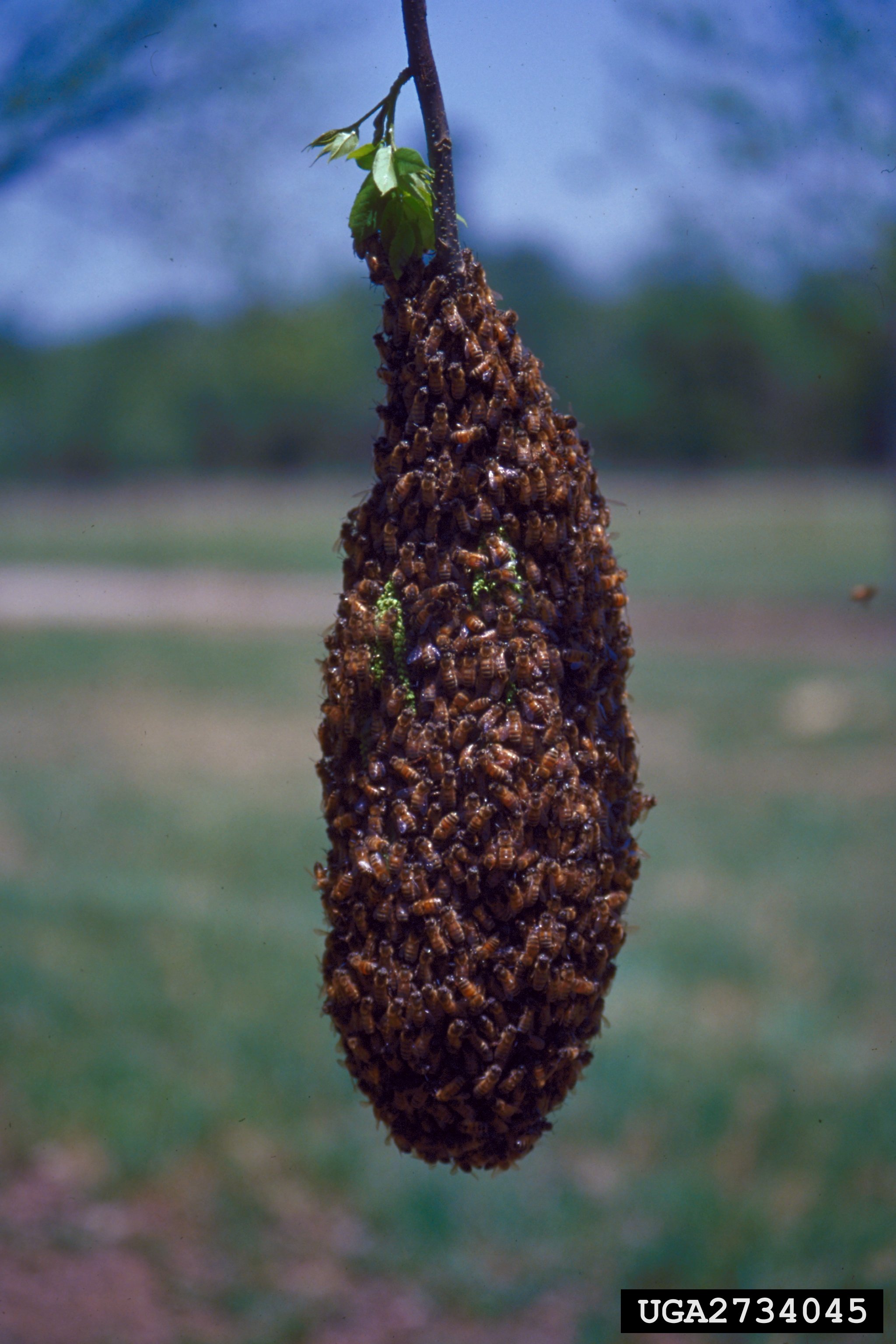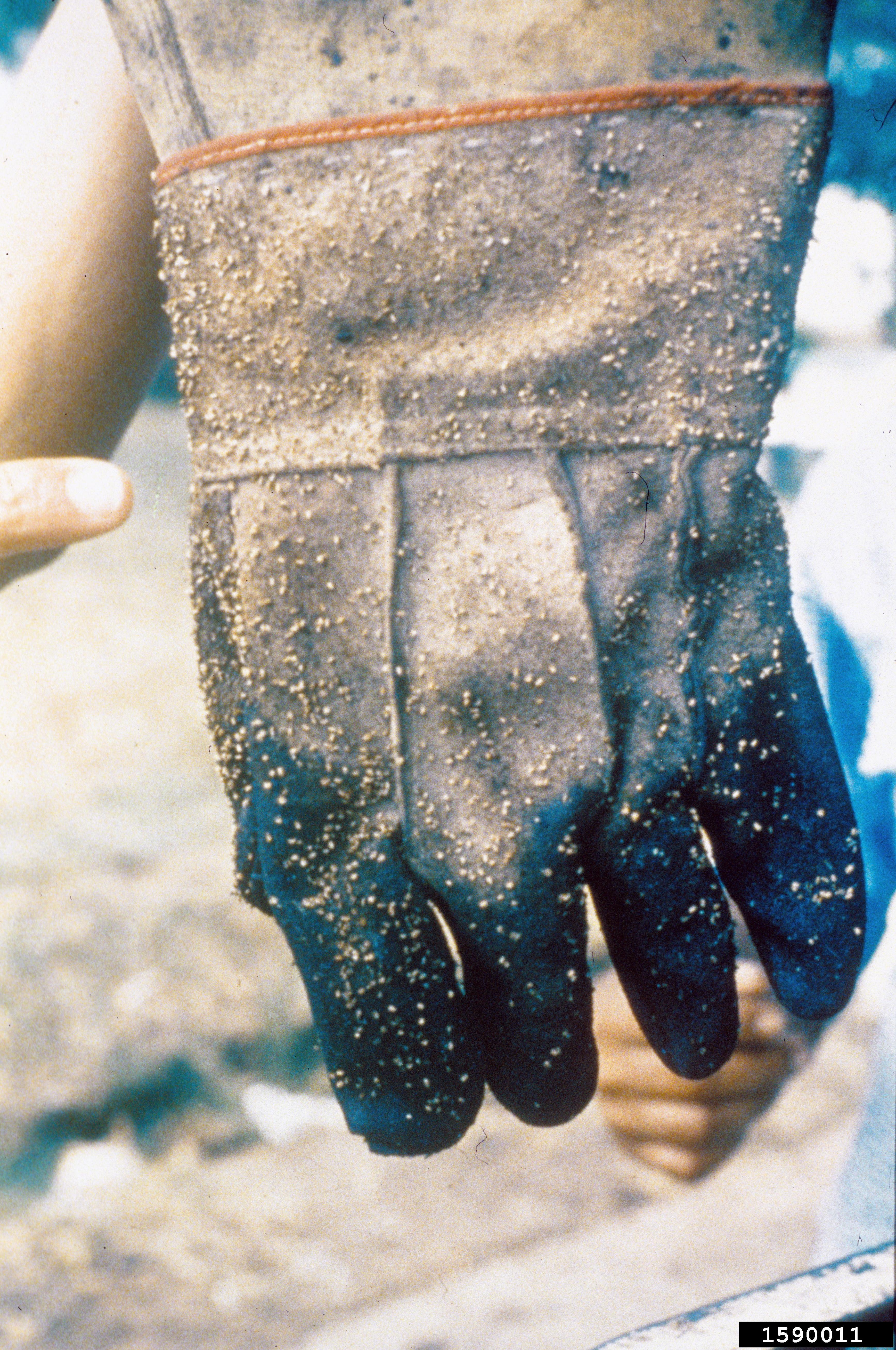 Feral Honeybees - April 14, 2021 Jeff Schalau, Agent, Agriculture & Natural Resources University of Arizona Cooperative Extension, Yavapai County Humans have benefitted from honeybees since prehistoric times. They provide honey, pollen, and royal jelly that humans harvest from beehives. Honeybees also pollinate flowers of many crop plants. One-third of the food Americans eat comes directly from the pollination honeybees and other insects perform. Apis mellifera ligustica is the species of honeybee which has been introduced, bred, and utilized by humans worldwide for centuries. The African subspecies of honeybee is Apis mellifera scutellata and are known for aggressive behavior in defense of their hive. These Africanized bees are virtually indistinguishable from European honeybees. Entomologists believe that the African subspecies developed their aggressive nature through the process of natural selection. African honeybees evolved in a tropical climate with frequent droughts and unpredictable weather. They also have dealt with a wide array of predators including humans. Conversely, European honeybees developed in a colder climate having four distinct seasons, abundant water, and a dependable forage base. In addition, they have been domesticated for many years and were purposely selected for their less aggressive behavior. Honeybees often swarm during the spring of the year when a new queen is produced. A swarm is a large group of honeybees flying together. Sometimes the swarm will rest for a day or so and appear as a mass of honeybees on a tree or other structure. They are generally not aggressive at this stage. They eventually move into more permanent structures. Africanized honeybees (AHBs) were introduced Brazil in 1950 to improve honey production in the tropics. They escaped quarantine in 1957, migrated north, and have been in the United States (Texas) since 1990. They were first seen in Arizona in 1993. Since then, many domestic animals and humans have been attacked – sometimes lethally. AHBs have been in Yavapai County since 1997 and have been recorded statewide. Today, any wild honeybee you come in contact should be considered an AHB. Additionally, we have many species of native, solitary bees which are not aggressive and pollinate native plants in addition to some crop plants. Arizona beekeepers often call them “feral honeybees”, collect them during swarming, re-queen them with a European honeybee queen, and maintain these hives for pollination and honey production. While these re-queened feral colonies can be somewhat more aggressive than European bees, they can be managed for production. AHBs pose the greatest threat to people who work outdoors: farmers, construction workers, landscapers, yard maintenance workers, and even pest control workers. Like European honeybees, AHBs can sting only once. It is their sheer numbers and aggressive behavior when their hive is threatened that creates a potential threat. While foraging, AHBs are usually not aggressive. Most cases of AHB attacks have been traced back to disturbance of the hive. Sometimes, it is a lawnmower, weed eater, tractor, or other power equipment that sets them off. However, simply being too near a hive can trigger aggressive behavior. The first sign of a potential attack is often a preliminary defense behavior such as flying at your face or buzzing over your head. This is a signal that you have entered their area and pose a threat. If bees become agitated, the most important thing to do is get away as soon as possible. Do not wait for them to calm down, try to retrieve belongings, or wave your arms to get them off you. A bee can fly at speeds from 12 to 15 miles per hour and most healthy humans can outrun them. So, RUN and KEEP RUNNING! AHBs have been known to follow people for more than a quarter mile. Any covering for your head and face will help you escape. People that have been attacked say the worst part is being stung in the face and eyes. Once this occurs, your vision will be obscured, and your chance of escape substantially decreased. If you have nothing else, pull your shirt up over your face. Take refuge in a house, tent, or car as soon as possible. The bees will find any opening, so make sure all possible entrances are sealed. Do not jump into water as the bees will wait for you to surface. Lastly, this article is not meant to scare you, but to inform you of the potential for encounters and how to respond. See below for additional information and photos. You can follow the Backyard Gardener on Twitter – use the link on the BYG website. If you have other gardening questions, email the Master Gardener Help Desk in Prescott (prescottmg@gmail.com) or Camp Verde (verdevalleymg@gmail.com) and be sure to include your name, location, and phone number. Find past Backyard Gardener columns or provide feedback at the Backyard Gardener web site: https://cals.arizona.edu/yavapai/anr/hort/byg/. Images  An Africanized honeybee (AHB, Apis mellifera scutellata). The individual shown here is a golden color, but they can also have darker coloring and be indistuingishable from European honeybees (Apis mellifera spp. scutellata).
An Africanized honeybee (AHB, Apis mellifera scutellata). The individual shown here is a golden color, but they can also have darker coloring and be indistuingishable from European honeybees (Apis mellifera spp. scutellata). Closeup of Africanized honey bees (AHBs) surrounding a European queen honey bee (EHB), marked with a pink dot for identification. Since AHBs arrived in Arizona in 1993, they've mated with EHBs and spread throughout the Southwest. But rather than commingling, AHBs tend to replace EHBs, partly because EHB queen bees mate disproportionately with African drones (Scott Bauer, USDA Agricultural Research Service, Bugwood.org).
Closeup of Africanized honey bees (AHBs) surrounding a European queen honey bee (EHB), marked with a pink dot for identification. Since AHBs arrived in Arizona in 1993, they've mated with EHBs and spread throughout the Southwest. But rather than commingling, AHBs tend to replace EHBs, partly because EHB queen bees mate disproportionately with African drones (Scott Bauer, USDA Agricultural Research Service, Bugwood.org). Small honeybee swarm on pecan limb. Swarms such as this are resting and usually not a threat to humans or other animals (G. Keith Douce, University of Georgia, Bugwood.org).
Small honeybee swarm on pecan limb. Swarms such as this are resting and usually not a threat to humans or other animals (G. Keith Douce, University of Georgia, Bugwood.org). Africanized honeybee stingers on a beekeeping glove demonstrating their potential for aggresive behavior (Georgia Department of Agriculture , Bugwood.org).
Africanized honeybee stingers on a beekeeping glove demonstrating their potential for aggresive behavior (Georgia Department of Agriculture , Bugwood.org).Additional Resources Africanized Bees: Better Understanding, Better Prepared, eXtension.org bee-health.extension.org/africanized-bees-better-understanding-better-prepared/ Africanized Bee, Wikipedia en.wikipedia.org/wiki/Africanized_bee |